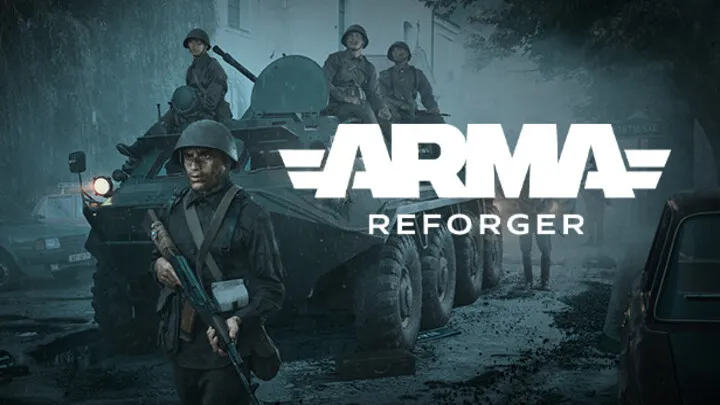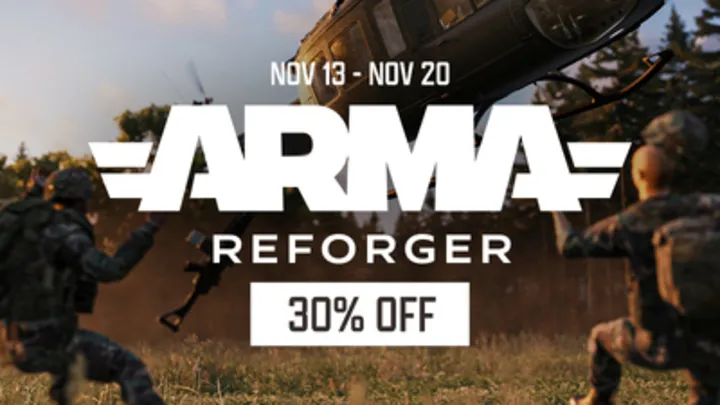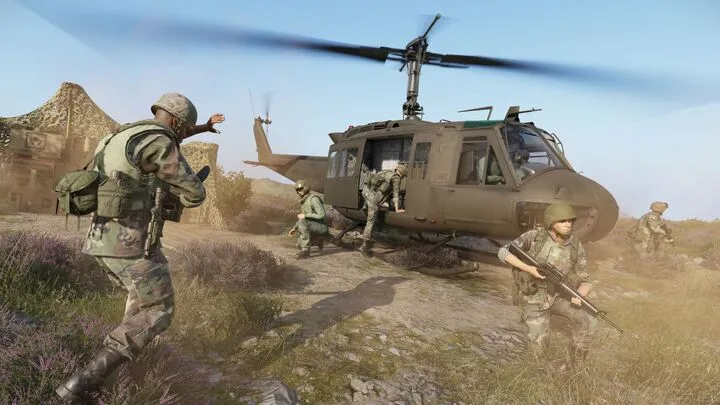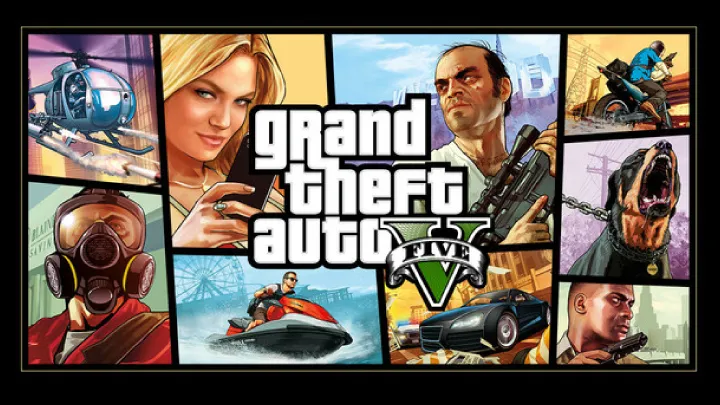Arma Reforger is not a game about shooting first. It is a game about transmitting information clearly, listening actively, and coordinating with military precision. You win firefights not because your team shoots better, but because your information circulates faster and more accurately. In Arma Reforger, communication is the real weapon.
This article is a deep how-to guide focused entirely on mastering advanced communication tactics. Not the basics—not “use the radio” or “say enemy spotted”—but the strategic structures, tone discipline, information prioritization, psychological messaging, micro-reporting, and squad-level radio frameworks used by high-level groups to dominate the battlefield.
Communication in Arma Reforger is not flavor. It is the backbone of movement, intelligence, survival, and victory. The player who masters communication becomes the leadership engine of the entire squad, even without formal rank. This article teaches you exactly how to communicate with that level of efficiency and clarity.
Establishing a Communication Baseline

Before any advanced skill can be developed, you must build a communication baseline. This baseline creates structure, tone, and rhythm for all future messages.
The baseline determines how your squad expects you to talk. Without a predictable pattern, your words become noise. With a baseline, your words become architecture.
What a Communication Baseline Includes
Your baseline should include these consistent elements:
- volume level
- pacing
- clarity
- message order
- reporting habit
- tone discipline
Players who talk in different styles each time disrupt the squad. Players who maintain a steady communication baseline become familiar, predictable, and trustworthy.
Why the Baseline Matters
The baseline is what your team subconsciously depends on when chaos breaks loose. When artillery fires, when half the squad is down, when comms flood, your baseline is what keeps you heard, recognized, and trusted.
Using Priority Messaging to Control Chaos
Arma Reforger has a constant noise problem: multiple people talking at once, small details drowning out critical data, and panic interfering with clarity. Priority messaging solves this issue.
Priority messaging is the art of ranking information by tactical impact. It prevents information overload and keeps comms clean.
The Tactical Priority Ladder
Use this ladder to filter what you say:
- life-threatening information
- enemy position and count
- friendly movement
- environmental hazards
- mission-critical updates
- secondary information
- general chatter
This ladder should govern every radio message.
How This Controls Chaos
When everyone uses the same priority system, comms organize themselves naturally. High-urgency calls interrupt everything; low-urgency calls wait. The result is order within battlefield chaos.
Mastering Brevity Codes and Tactical Compression

In military communication, shorter is stronger. Brevity codes compress long ideas into fast, universally understood messages. Arma Reforger thrives on brevity.
Most players use full sentences, emotional descriptions, or rambling reports. This slows down squad reaction time.
Principles of Tactical Compression
Tactical compression removes:
- emotion
- unnecessary detail
- personal commentary
- speculation
And replaces them with:
- direct facts
- location codes
- simplified actions
For example:
Instead of: “I think there’s a guy in the trees on my right.”
Say: “Contact east treeline, single.”
Timing Is Everything
Compression allows you to send a complete message in under two seconds. That speed is what saves lives.
Using Directional and Spatial Language Effectively
Arma Reforger players often use vague spatial language such as “over there” or “behind that rock.” These messages are meaningless under pressure. Spatial clarity is the foundation of precision communication.
The Three Tiers of Spatial Detail
Your spatial directions should follow these tiers:
Tier 1 – Direction
Tier 2 – Distance
Tier 3 – Landmark
A proper spatial callout includes all three.
For example:
“West, 150 meters, red barn.”
Avoiding Common Spatial Errors
Avoid:
- “over by me”
- “to your left” without specifying whose left
- vague distance references like “far” or “close”
- pointing or pinging without verbal communication
Verbal precision keeps your team informed even without visuals.
Maintaining Tone Discipline Under Pressure

Tone discipline determines whether your squad feels in control or panics. Tone carries emotional weight. In Arma Reforger, panic spreads over the radio faster than bullets.
Tone discipline is the practice of keeping your voice steady, low, and calm—even when everything is collapsing.
Elements of Tone Discipline
Tone discipline consists of:
- neutral voice
- controlled pace
- consistent volume
- absence of panic words
- predictable rhythm
Tone is more influential than content. A calm message gives calm to those who hear it.
Eliminating Panic Language
Avoid phrases such as:
- “Oh no!”
- “I’m hit I’m hit I’m hit!”
- “We’re surrounded!”
- “I don’t know what’s happening!”
Replace them with factual reports:
- “I’m down, taking fire from south.”
- “Enemy close south.”
Tone discipline is psychological leadership.
How to Layer Communication for Squad Movement
Movement communication is the structure that keeps squads cohesive. Without layered communication, squads fracture, wander, and die separately. Layered communication creates synchrony.
The Three Layers of Movement Comms
Layer 1 – Pre-movement call
Layer 2 – Movement description
Layer 3 – Post-movement confirmation
Layer 1 example: “Squad prepare to move north.”
Layer 2 example: “Squad moving north, column.”
Layer 3 example: “Squad set north ridge.”
Why Layered Communication Works
Layering creates clarity before, during, and after movement. It ensures no one feels lost. It minimizes unnecessary questions. It creates squad confidence.
How to Use Micro-Reports to Increase Situational Awareness
Micro-reports are small, rapid-fire observations used to keep the squad updated in real time. These are not full messages. They are minimal units of battlefield information.
Micro-reports communicate the battlefield’s pulse.
When to Use Micro-Reports
Use them when:
- entering new terrain
- hearing distant shots
- spotting movement
- detecting environmental shifts
- feeling uncertain
Micro-reports should always be short, such as:
- “Footsteps west.”
- “Vehicle north.”
- “Shots south.”
Why Micro-Reports Matter
They provide real-time awareness that allows squad leaders to make informed decisions. Micro-reports help prevent ambushes and reduce uncertainty.
Strategic Radio Silence and Controlled Non-Communication
Communication is a weapon—but silence is also a tactic. Arma Reforger rewards squads who understand when not to speak.
Strategic silence reduces audio clutter and amplifies awareness.

When to Use Radio Silence
Radio silence is necessary during:
- stealth infiltration
- pre-ambush positioning
- high-alert listening periods
- coordinated breaching
- nighttime operations
Too many words destroy stealth.
Controlled Non-Communication
Controlled non-communication means restricting comms to essential information only:
- contacts
- movement orders
- mission updates
Everything else is prohibited.
True discipline is knowing when to hold the radio.
Advanced Listening Skills and Audio Interpretation
Most players focus on talking. Specialists focus on listening. In Arma Reforger, sound is intelligence.
Advanced listening allows you to:
- identify enemy proximity
- detect flanking
- recognize vehicle movement
- sense changes in squad morale
- internalize radio patterns
Listening to the Environment
Environmental listening includes:
- wind shift
- distant footsteps
- metallic clicks
- weapon reloads
- suppressed rounds
These sounds reveal intent.
Listening to Your Squad
Your team’s tone reveals:
- hesitancy
- fatigue
- stress
- uncertainty
- confidence
Listening lets you anticipate when someone is overwhelmed and needs support.
Building a Personal Communication Identity
Every great communicator develops a signature communication identity. This identity helps your squad instantly recognize your style, trust your voice, and depend on your updates.
Your communication identity includes:
- tone
- rhythm
- reliability
- expertise
- consistency
Characteristics of a Strong Communication Identity
A strong identity is:
- predictable
- disciplined
- emotionally neutral
- clear
- structured
This makes teammates naturally follow your calls.
The Long-Term Impact of a Strong Identity
As your communication identity grows, players begin to rely on you during chaos. You become a stabilizing force, a natural leader, even without a designated role.
Conclusion
Mastering communication in Arma Reforger requires skill, structure, emotional discipline, and intentional practice. By developing a communication baseline, controlling information priority, using tactical brevity, applying spatial precision, maintaining calm tone, structuring movement comms, producing micro-reports, applying strategic silence, mastering listening, and creating your own communication identity, you elevate yourself far above the average player. You become a tactical anchor—a voice that guides the squad through chaos with clarity and authority.
Great communication does not just support the team. It transforms the entire battlefield. In Arma Reforger, communication is the difference between confusion and coordination, panic and confidence, defeat and victory.

















